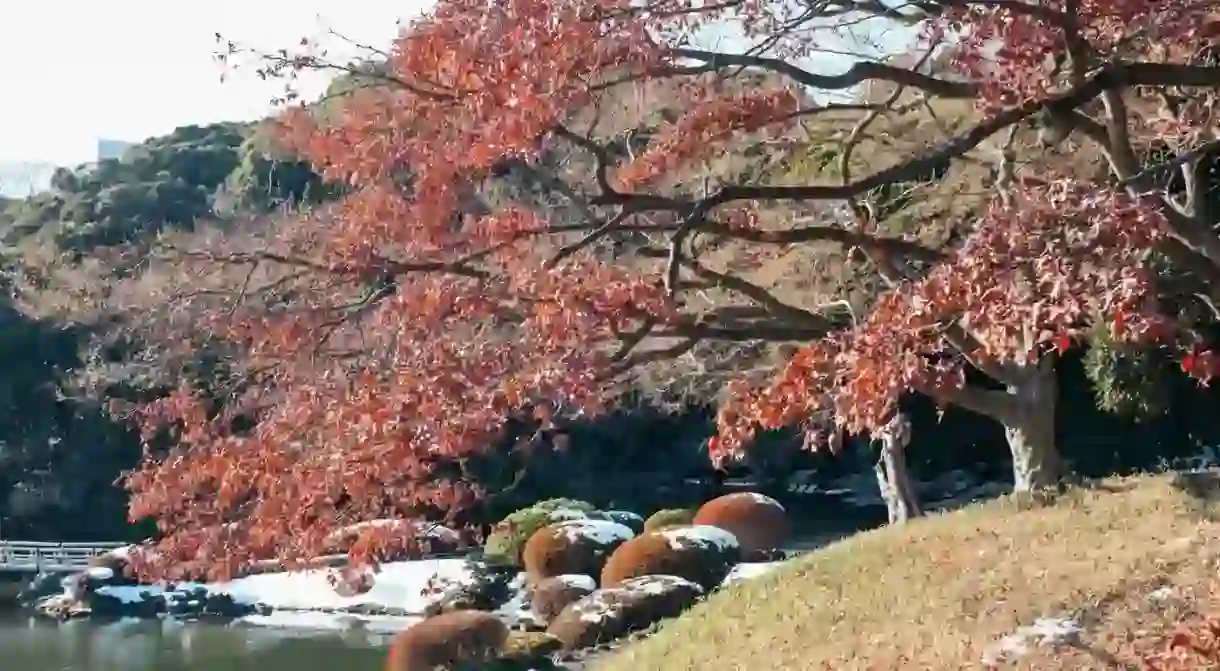A Photographer’s Guide to Tokyo’s Shinjuku Gyoen National Garden

When you think of Tokyo, the image that immediately comes to mind is a sprawling, neon-drenched metropolis; a city filled to the brim, with a population so dense that the streets are filled with people every second of the day and night. And the Japanese capital is all that – but it’s also a city of great contrasts. Tokyo is a place that boasts some of the most richly historic and naturally stunning parks in the world. This is what makes it a true photographer’s delight.

Dotted throughout Tokyo’s artificial landscape are parks that are ready to whisk you away into a completely new world. Shinjuku Gyoen National Garden is one such tranquil place, located in the heart of one of the largest cities on Earth.


The history of Shinjuku Gyoen
Stretching across Tokyo, touching points of both Shinjuku and Shibuya, this garden is among the city’s biggest and most popular parks. Located just a short walk from Shinjuku station, it is home to weaving walkways, sprawling lawns and trees that transform with the passing seasons.


During the Edo period (1603-1868), the park was originally the residence of the Naitō family, a feudal family with connections to a samurai clan. Following the Edo period, the park was turned into a botanical garden and passed on to the imperial family in 1903, who used it as a place for recreation and entertainment. During the attacks of World War II, Shinjuku Gyoen was almost completely destroyed – only to be salvaged and from the ashes was reopened as a public park in 1949.
Shinjuku Gyoen today
Today, Shinjuku Gyoen is separated into three different parks and is home to the oldest traditional Japanese landscape garden in existence. The classic traditional Japanese area of the park features perfectly maintained shrubs and foliage as well as a collection of ponds adorned with mini islands and bridges ready for exploration. Wander through and you’ll come across its many pavilions, the highlight being the Kyu Goryotei, also known as the Taiwan Pavilion, which was built to commemorate the wedding of the Showa Emperor.



Shinjuku Gyoen changing through the seasons
On the other side of the park sits a completely different world. It features two Western-style parks, a classic French garden and an English landscape garden with sprawling lawns and towering trees that evolve with the seasons. Dotted with hundreds of cherry trees, this area is a popular cherry blossom viewing spot in the spring months of March and April, when the ground is carpeted with falling pale pink flowers. This creates a stunning backdrop that resembles something straight from the walls of an art gallery.



During September and October, the park takes on a whole new persona as the trees come alight, shining fiery shades of autumnal gold and red leaves. Wander through the Japanese garden and the eastern corner of Momijiyama, also known as Maple Mountain, to see the stunning maple trees, which stay red all the way through November and December and even as late as January.
Beyond the park’s outdoor beauty, the land here is also home to an art gallery and a greenhouse that boasts an impressive selection of tropical and subtropical flowers all year round.


Shinjuku Gyoen in Japanese cinema
Over the years, the park’s beauty has been the inspiration behind a number of iconic anime films. In the contemporary manga-turned-anime The Garden of Words (2013) by Makoto Shinkai, it became the main backdrop and catalyst for this incredibly moving coming-of-age story. The film follows the journey of Takao Akizuki, a 15-year-old student and aspiring shoemaker who meets 27-year-old Yukari Yukino. Together they navigate the confusing world of love and identity after a rainy chance encounter under a pagoda here in Shinjuku Gyoen.


If you’re spending time in Tokyo and starting to feel like the overstimulation of the city centre is getting to be too much, don’t forget that this not-so-little hideout is just a short stroll away. The park is open from 9am until 4.30pm every day except Monday and admission is ¥200(£1.40).












